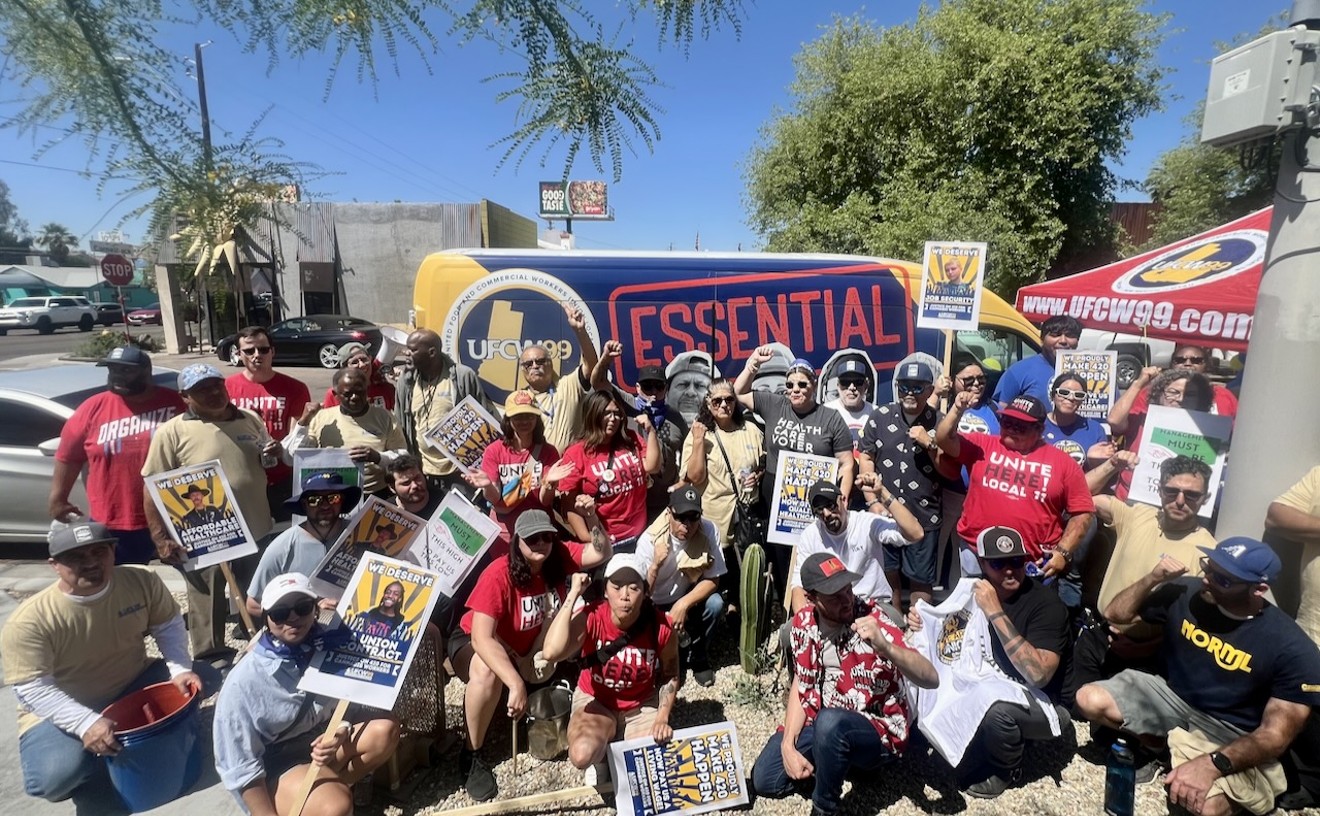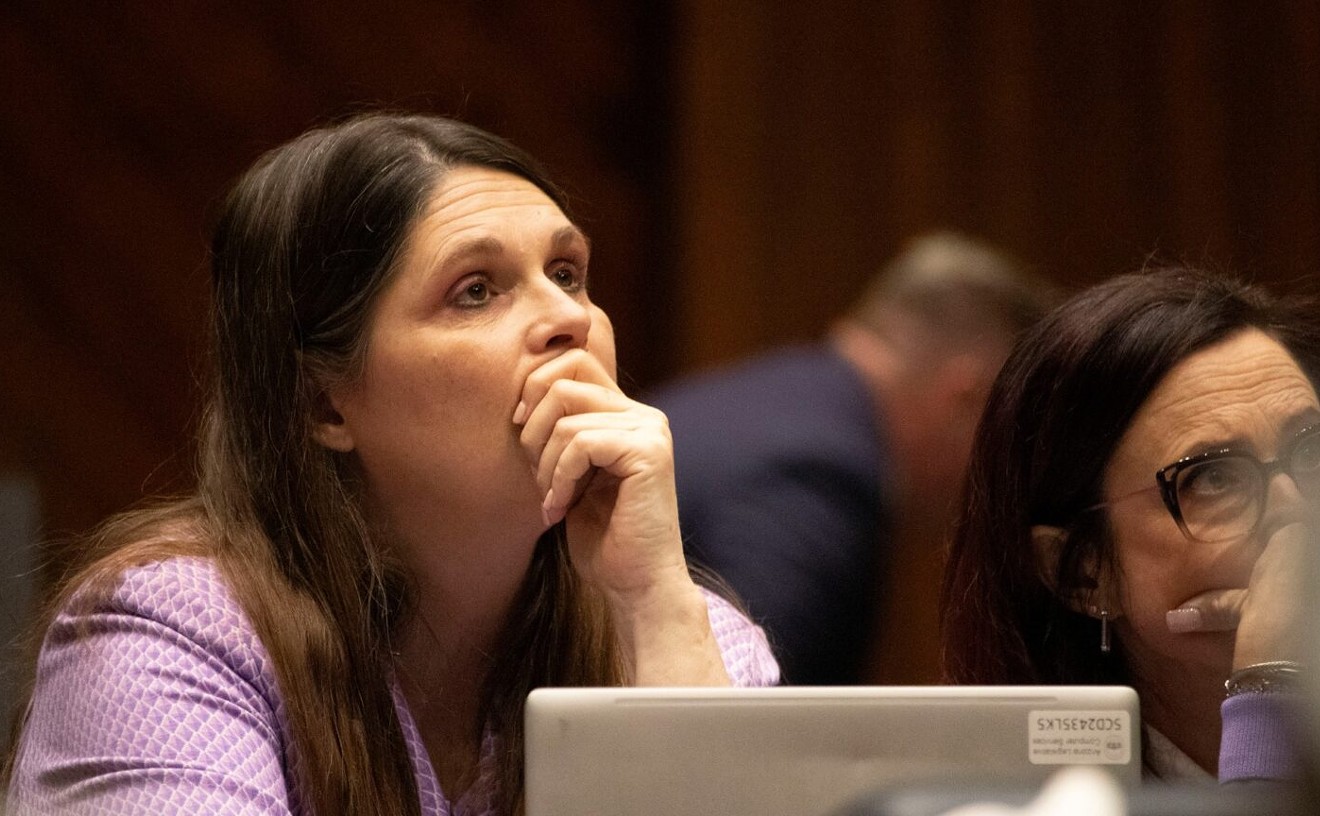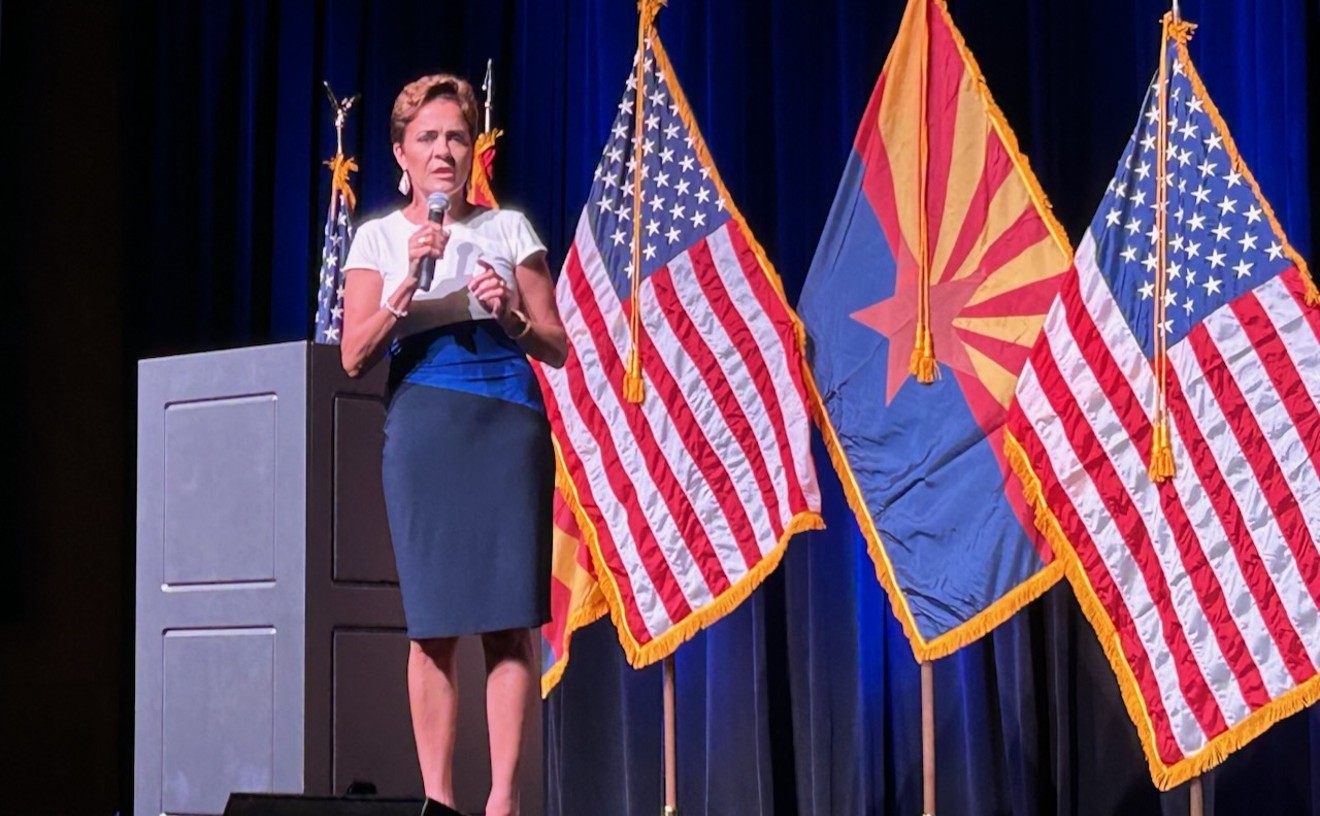That comment caused self-esteem problems that make me stutter in crowds.
Ugly and mute, I realized radio and television weren't for me. What else could an egomaniac do? I was told to pursue print journalism.
In West Palm Beach, then El Paso, then Omaha, then Phoenix, I kept landing in newsrooms full of kindred oddities. There were aisles and aisles of misfit toys. Mousy schoolmarms writing brilliantly about food, fedora-wearing Studs Terkel wanna-bes writing vividly about cops.
Tourette's sufferers on city hall, Dungeons and Dragons geeks in sports, J. Edgar Hoovers back in editorial. They were all the best in town at what they did and all too freakish to do anything else.
I fear we'll all be gone soon.
The death of us will be a new synergerific media concept called "convergence." The Arizona Republic and East Valley Tribune, in conjunction with Channel 12 and Channel 15, respectively, are both suddenly knee-deep in the stuff.
Basically, the idea is to swap newsroom personnel between newspapers and sister television stations. Television inherits the depthier reporting of print journalism; newspapers get access to that expanding audience of ingrates who only get their news from television.
Channel 12 and the Republic, both owned by Gannett, are way ahead in the game. In the last year, the two properties have become the experimental template for media cross-pollination for all of Gannett, which owns more than 100 newspapers and television stations across the country.
"We're making it up as we go," says Mark Casey, Channel 12's news director. "But so far, it's been a win-win for everyone."
Last week, the East Valley Tribune hired its first "on-air reporter." She began by interviewing State Schools Superintendent Jaime Molera on Channel 15. Expect the Tribune's progressive parent company, Freedom Communications, and the Tribune's Gannett-hating publisher, Karen Wittmer, to rush to beat Gannett at knocking down walls between newspaper and television.
For my part, I believe convergence is a win-win, lose-rout. It's great for television news, great for newspaper marketing and awful for both the marketplace of ideas and the marketability of talented geeks, who, from my experience, are the bedrock of quality print journalism in America.
I watched the future of journalism one recent morning:
Brahm Resnik, a hottie Republic business editor, sat at the Channel 12 anchor desk.
He was reading a story he crafted about a rich couple's alimony arguments. The wife, of course, wanted millions to maintain "the lifestyle to which she is accustomed."
As he spoke, Brahm's head jogged right, jogged left, jogged down. He pointed, he paused, he inflected, he raised his eyebrows. He looked to the weatherman as he finished: "So, Joe, is that enough to keep you in the lifestyle to which you are accustomed?"
I have no idea if Brahm is a decent journalist, but he is fantastic at the genuinely difficult art of live television news.
After Sue in traffic, the ball was passed to the bargain-hunting consumer reporter.
The woman held up some Republic grocery ads.
"Albertsons has 33 percent off gourmet turkey breast," she says, showing the ad. "That's a good deal."
"Safeway has this Buy-One-Get-One-Free on Kellogg's cereal. That's a really good deal."
Ugh. I imagined myself there holding up a copy of New Times:
"Wow, only two grand for two nice gams. Can't beat that deal. And look at these bargains on gay white males."
Convergence seems to be further blurring the line between Gannett's newsrooms and advertising departments. That's never good news for the quality and objectivity of public discourse.
Other convergence issues are grayer.
Channel 12 and the Republic began exploring how to share resources in November of 2000.
Early on, Republic writers were given screen tests. Some didn't look so good; some, like Resnik, looked great.
Like Pygmalion, Resnik then was put through a rigorous six-week course on writing for and looking good on television.
"We taught him how to read a TelePrompTer, we taught him how to use his voice, then he worked and worked and worked," Casey says. "Brahm got it. He became very good very quickly."
Conversely, a few TV folks were taught how to write newspaper stories. Rick DeBruhl, Channel 12's consumer advocate, began writing a column for the Republic, which is woefully short on consumer news.
Channel 12 and the Republic mixed resources for the border series "Dying to Work." TV got deeper reporting and analysis, the newspaper got relentless promotion of its print stories, video for its Web site and, best of all, the keys to the helicopter.
More reporters will be receiving training. You'll soon be seeing more stories and personnel draped across both media.
Tom Callinan, editor of the Republic and a long-respected Gannettoid, says the paper is trying to move slowly into the marriage.
"We have to make sure we're not shoveling print into a format that doesn't work," he says. "We also have to make sure we have that independence if we have to write about [Channel 12]. We have got to be pretty careful with this. And I think we are being careful."
Callinan is wise to be careful. He has more to lose than Casey. While the public has built up its tolerance for sleaze and stupidity from local television, it still has high expectations for the metro daily.
Callinan doesn't foresee a drain on the depth and breadth of the Republic's reporting. (Install your own easy joke here.)
Carl Sessions Stepp, senior editor of the American Journalism Review, also says he has yet to see any harm from the commingling of newsroom and television stations. But he hasn't seen any advantage, either.
"I think we're still at the point where you need a very strong broadcaster to tell a good broadcast story, and a very strong writer and reporter to tell a good newspaper story. They are not interchangeable."
Ben Bagdikian, another leading media critic, is less neutral. Crossing disciplines can't help but pull reporters from the relentless shoe-leather reporting and thoughtful writing that makes worthwhile print stories.
"When you take away most of the disciplines that go into traditional newspaper reporting, you get what is already apparent in most radio, TV and quick, on-line stories," he wrote in an e-mail to me. "The result will be fundamental loss to the community that comes with each citizen group receiving from their newspaper the particular detailed stories that meet their particular civic needs."
Another clear danger: As two sources of information become one, the community loses another independent newsgathering source. The number of opinions dwindles, the number of sacred cows rises. In Milwaukee, for example, the guy who owned the local paper and a local television station wanted a new stadium built. Predictably, both media outlets essentially heralded the plan, drowning out opposing views.
Channel 12 already has adopted the annoying habit of interviewing Republic writers about topics rather than having its staff do the reporting themselves.
I still think some good can come from all this. Republic and Tribune reporters can make television smarter, and smarter viewers make smarter citizens.
If television can bring new readers to newspapers, then newspapers theoretically can afford to hire more reporters to better cover the Valley.
But two things Mark Casey said continue to haunt me. They were innocent individually, but together they sounded like the death knell for future generations of every odd, wonderful bastard I've ever respected.
Casey says he's already met with an ASU journalism professor to discuss fitting cross-media training into university curricula. Stepp says this is beginning to happen nationwide.
Also, Casey says:
"At some point, this is something we're going to expect from everyone."
I imagined my old J-school colleagues projected into this journalism class of the future. I imagined our best five writers washing out miserably in front of a camera.
I imagined them becoming felons instead.
If they made it to a newspaper, I imagined them getting stuck in some crummy bureau beat because all the big stories needed reporters who looked good explaining those stories on television.
Then I imagined a funeral. In front were the corpses of old Arizona nonfiction war-horses like Chuck Bowden, Lew Ruggiero, John Dougherty, Maureen West and Mark Flatten.
In the audience, 400 Brahm Resniks wept. At the podium, Brahm Resnik deftly read a 75-second eulogy to the good work of this dead generation of misfits.
"We promise to carry your torch," he said with an anchor's pool-drowning solemnity.
Then he smiled, as if the dead had never died at all.
"And speaking of torches, let's go to Joe for that hot-as-a-torch forecast!"










